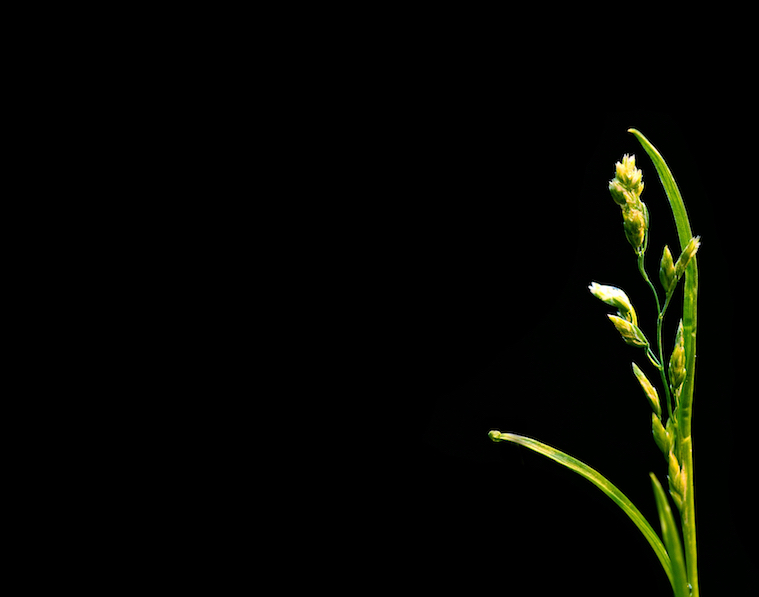By Devon Carroll and Jim Brosnan, Ph.D.
A new year often brings new technology to the turfgrass industry, and 2020 is no exception. Four new herbicides will be available to field managers in 2020, including Coastal, Cheetah Pro, Crew, and Vexis. These products contain active ingredients from six mode-of-action groups with several combined in pre-packaged mixtures. Mode-of-action groups indicate the physiological mechanism a herbicide uses to control weeds, and can be easily identified on product labeling using the Weed Science Society of America (WSSA) group numbering system (e.g., dithiopyr [the active ingredient in Dimension] belongs to WSSA Group 3).
These new herbicides have been researched for several years at land-grant universities throughout the United States to determine how they can be optimally used to control weeds of cool- and warm-season turfgrass while minimizing environmental impact. This article will outline attributes of these new herbicides to aid athletic field managers considering incorporating them into their weed management programs.
Coastal
Coastal is a new herbicide mixture from Sipcam Agro that contains prodiamine (WSSA Group 3), imazaquin (WSSA Group 2), and simazine (WSSA Group 5). This mixture can be applied preemergence to control many grassy and broadleaf weeds including crabgrass (Digitaria spp), annual bluegrass (Poa annua), and goosegrass (Eleusine indica) on bermudagrass (Cynodon spp.) and zoysiagrass (Zoysia spp.) playing surfaces. Additionally, Coastal offers early-postemergence control of several weed species. Depending on geography, Coastal should be applied between September 15 and May 31 at rates of 48 to 64 fl. oz./A. Coastal can hamper spring transition of warm-season turfgrasses. Therefore, use as turfgrass is emerging from dormancy is not recommended.
Cheetah Pro
Cheetah Pro is a new herbicide from NuFarm that offers an alternative to glyphosate on select weeds. Cheetah Pro contains 24.5 percent glufosinate (WSSA Group 10), the same active ingredient in Finale. However, Finale (11.3 percent glufosinate) is less concentrated than Cheetah Pro, so turfgrass managers must carefully read product labeling to identify optimal Cheetah Pro application rates. As a non-selective herbicide, Cheetah Pro can be applied to dormant bermudagrass at rates of 24 to 82 fl. oz./A based on weed size and growth stage. The herbicide is labeled for control of nearly 200 weed species including annual bluegrass and other grasses that may be considered weeds in mixed turfgrass stands. Research at the University of Tennessee has shown that herbicides containing glufosinate can control certain populations of annual bluegrass that have evolved resistance to glyphosate. Sequential applications of Cheetah Pro may be required to control certain weed species and can be applied as early as five days after initial treatment.
Crew
Crew is a new herbicide mixture from Corteva Agriscience that contains isoxaben (WSSA Group 21) and dithiopyr (WSSA Group 3) labeled for preemergence control of many broadleaf and grassy weeds including crabgrass, goosegrass and annual bluegrass. Additionally, Crew can be used for postemergence control of newly emerged crabgrass through the one-tiller growth stage. Crew is labeled for use on most turfgrass species used on athletic fields including bermudagrass, zoysiagrass, seashore paspalum (Paspalum vaginatum), Kentucky bluegrass (Poa pratensis), perennial ryegrass (Lolium perenne), and tall fescue (Festuca arundinacea). However, the herbicide should not be applied to fields that have been sodded, sprigged or reseeded until they are fully established. Additionally, sports field managers need to delay seeding or sodding fields treated with Crew until 8 to 12 weeks after application. Crew is labeled for use at 150 to 200 lbs./A.
Vexis
Vexis is a new granular herbicide from PBI Gordon that contains the acetolactate synthase inhibiting herbicide pyrimisulfan (WSSA Group 2). Vexis is labeled for postemergence control of sedge (Cyperus spp.), kyllinga (Kyllinga spp.), rush (Juncus spp.), and select broadleaf weeds on nearly all cool- and warm-season turfgrasses used for athletic fields. Initially, Vexis will be available to athletic field managers in a 2-pound shaker can designed for spot treating individual weeds (rather than broadcasting across an entire field). One shaker can supplies enough product to treat an area as large as 500 square feet. Athletic field managers must delay seeding or sodding for three weeks after Vexis treatment; when using the product on newly established turfgrass a three-week delay is required as well. Unlike most granular herbicides, Vexis can be applied to wet or dry foliage, but will require irrigation (or rainfall) within 48 hours after application.
Devon Carroll is a Plant, Soil, and Environmental Science Ph.D. student focused in turfgrass weed science in the Department of Plant Sciences at The University of Tennessee, Knoxville.
Jim Brosnan, Ph.D., is a professor in the Plant Sciences Department at the University of Tennessee (UT) and leader of UT’s new Weed Diagnostics Center. His research focuses on effective and economical strategies for broadleaf and grassy weed control in various turfgrass systems, including golf courses, athletic fields, and residential landscapes.
Editor’s Note: This overview is intended as an informational look at what is new on the market for 2020, and does not imply an endorsement of any particular product(s) by the authors or SportsField Management.
Update, 4/22/20: The previous version of this article included information about GameOn from Corteva Agriscience. However, GameOn is not currently labeled for sports turf.


